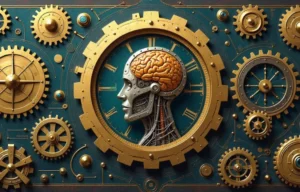

Prefer to listen instead? Here’s the podcast version of this article.
Artificial Intelligence (AI) is at a crossroads. For years, “scaling laws” have been the guiding principle for AI advancement. These laws suggest that simply increasing the size of datasets, computational power, and model parameters leads to better-performing AI systems.
But as the industry faces diminishing returns from scaling, questions arise: How far can this approach take us? Is AI innovation hitting a plateau, or are we on the brink of a paradigm shift? Let’s dive into this debate and explore related developments shaping the AI landscape.
Scaling laws have fueled AI’s meteoric rise, driving breakthroughs in natural language processing (NLP), image recognition, and autonomous systems. Large Language Models (LLMs) like GPT-4 owe their capabilities to vast amounts of data and computing resources. However, reports from Time [read here] reveal diminishing returns: as models grow larger, the performance gains shrink, making it harder to justify the spiraling costs of training.
Why it matters: This issue is more than theoretical. Companies like OpenAI and Anthropic must rethink how they scale their models, balancing resource constraints with consumer demand for smarter, faster AI systems.
As scaling laws reach their limits, companies are pivoting to new training methods. OpenAI, Google DeepMind, and others are exploring “efficient scaling” techniques, which aim to replicate human-like thinking without brute-forcing computational resources. According to Reuters [article here], these methods focus on improving the quality of training data and incorporating reinforcement learning from human feedback.
Emerging approaches: Sparse neural networks, modular training architectures, and energy-efficient optimization algorithms are gaining traction, promising a more sustainable path forward for AI.
Nvidia, a cornerstone of AI hardware innovation, is addressing the computational bottlenecks exacerbated by scaling laws. At a recent event, Nvidia CEO Jensen Huang predicted a “millionfold” increase in computing power over the next decade [Business Insider]. These advancements hinge on generative AI, where GPUs play a critical role in training models.
Key insight: While hardware innovations will accelerate model training, industry leaders acknowledge the need for more efficient algorithms to avoid power grid strain and environmental concerns.
AI’s trajectory isn’t just about building bigger models; it’s also about deploying them effectively. At the Ignite 2024 conference, Microsoft introduced autonomous AI agents designed to handle complex, multistep tasks. These agents can manage customer service workflows or financial transactions, reducing human involvement in routine operations [AP News].
Implications: Such tools demonstrate a practical application of AI that moves beyond theoretical scaling laws, focusing instead on usability and problem-solving in real-world settings.
The rise of autonomous agents is reshaping industries. As highlighted by Barron’s [full story], AI agents are increasingly capable of performing tasks traditionally requiring human oversight. This trend aligns with the industry’s push to maximize utility over raw processing power, reflecting a shift in priorities.
The takeaway: AI agents represent a growing trend of making AI systems smarter, not just larger. By doing so, they sidestep some of the challenges posed by scaling laws.
The debate on scaling laws underscores a critical juncture for AI. Companies are grappling with the trade-offs of pursuing larger models versus developing more efficient, human-centric systems. The future likely lies in a hybrid approach: combining scalable computing power with smarter training techniques and real-world applications.
WEBINAR